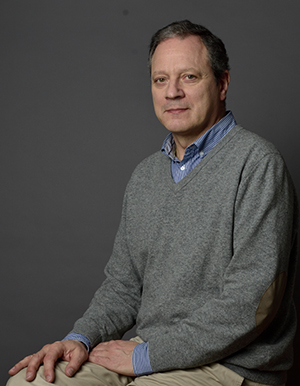Carlos Frazão Lab
Macromolecular Crystallography Unit

 |
The Structural Biology Laboratory works on the 3D structural determination of biological macromolecules aiming to understand biological processes at atomic and molecular level. |
|
Carlos Frazão Phone (+351) 214469666 | Extension 1619 |
|
 |
Research Interests
The Structural Biology Laboratory (SBL) aims the understanding of biochemical processes at atomic level, mainly based on the determination of biological macromolecules 3D structures using X-rays diffraction analysis. The interpretation of these structures originates clues on how biomolecules may interact, and has enabled the rationalization of applications in diverse fields of life sciences. SBL promotes the collaborations with other research groups to study key biological macromolecules, including enzymes or complexes between proteins and nucleic-acids. SBL is involved in several research projects, where the 3D structure is one of their milestones, e.g.:
- Study of the structures of sulphur oxygenase reductases from Acidianus ambivalens and Halothiobacillus napolitanus, in collaboration with the Univ. Darmstadt, Germany. Immediate goals are the increase of the resolution of their structures, and the capture relevant reaction intermediates analogues. These enzymes are involved in the sulphur geo-bio-cycle being responsible for the insertion of inorganic sulphur into the life-cycle. They work as self-compartmentalising reactors at nano scale, being prototypes of proto-organelles in archaea.
- Determination of native and site-directed mutants of UDP-glucose dehydrogenases (UGDs) from Burkholderia cepacia and from from Sphingomonas elodea, in a collaboration with IST, Univ. Técnica de Lisboa. These studies belong to a research program on two bacterial extracellular polysaccharides (EPS), namely cepacian and gellan, with relevance in Medicine and Biotechnology. The EPS cepacian seems to play a role at the persistence and virulence in cystic fibrosis lung, wheras gellan is one of the most important commercialized bacterial exopolysaccharides.
- Charachterization of type I (oxygen-insensitive) nitroreductase from Rhodobacter capsulatus in collaboration with Univ. of Saragoça, Spain, and ESRF, Grenoble, France. This is an enzyme with potential applications in bioremediation and cancer therapy. Ñitroaromatics are found widely spread in nature and derive almost exclusively from human activities, namely from paints or dyes, explosives or pharmacology industries. They are highly toxic materials but microorganisms derived strategies to degrade and remove these xenobiotic compounds.
Group Members
- Patrícia T. Borges, M.Sc.
- Dalila Fernandes, M.Sc.
Selected Publications
- C.M. Romão, J.B. Vicente, P.T. Borges, B.L. Victor, P. Lamosa, E. Silva, L. Pereira, T.M. Bandeiras, C.M. Soares, M.A. Carrondo, D.Turner, M. Teixeira, C. Frazão, "Structure of Escherichia coli Flavodiiron Nitric Oxide Reductase" Journal of Molecular Biology (2016) 428:4686-4707. doi:10.1016/j.jmb.2016.10.008
-
P.T. Borges, C. Frazao, C.S. Miranda, M.A. Carrondo & C.V. Romao, "Structure of the monofunctional heme catalase DR1998 from Deinococcus radiodurans" Febs Journal (2014), 281(18):4138-4150. doi: 10.1111/febs.12895.
- A. Veith, T. Urich, K. Seyfarth, J. Protze, C. Frazão and Arnulf Kletzin (2011) "Substrate Pathways and Mechanisms of Inhibition in the Sulfur Oxygenase Reductase of Acidianus Ambivalens", Front. Microbio., 2(37):1-12, doi: 10.3389/fmicb.2011.00037.
Laboratory's Website
For further information please visit the laboratory's website
MX Unit Website
For further information please visit the MX Unit Website
Biologia Estrutural
Unidade de Cristalografia de Macromoléculas
Para compreender a química da vida é preciso saber como as moléculas biológicas interactuam entre si, o que implica a determinação estrutural dos seus muitos milhares de átomos. A Cristalografia de Macromoléculas permite a visualização de proteínas e/ou ácidos nucleicos, e recorre à Química, à Física e à Electrónica para a obter centenas de milhares de medidas experimentais que as permitem caracterizar detalhadamente, fazendo uso de técnicas computacionais. O Laboratório de Biologia Estrutural, em colaboração com grupos de investigação de diversas Universidades, trabalha actualmente no estudo de enzimas e complexos de proteínas - ácidos nucleicos com aplicações nas indústrias farmacêutica e alimentar, em bio-remediação, em estudos de transferência electrónica entre biomoléculas e em mecanismos enzimáticos. A obtenção das estruturas tridimensionais das macromoléculas biológicas tem permitido a crescente racionalização de aplicações nos mais diversos campos das ciências da vida.







